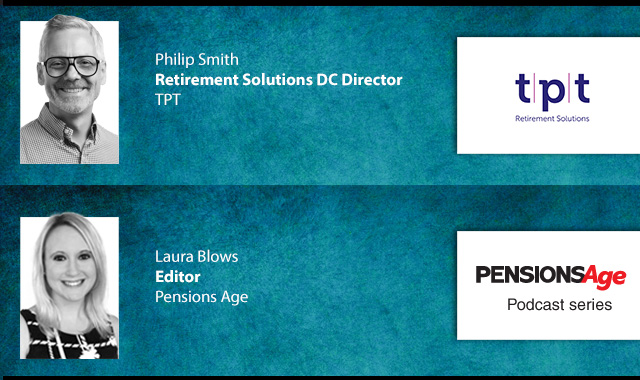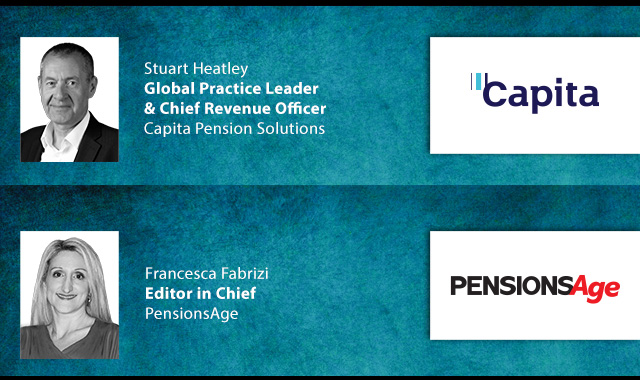Hi and welcome to our Pensions Age video interview. I’m Laura Blows, editor of Pensions Age, and joining me today to discuss NEST’s investment strategy is its Chief Investment Officer, Mark Fawcett.
Could you provide me with an overview of current market conditions?
It is pretty challenging at the moment, although the global economy seems to be growing pretty well. A lot of asset classes are looking fairly fully valued, and there are a number of risks on the horizon. In the short to medium term we are seeing political risks. In Europe they have tended to subside a bit, but clearly we have the issue of what's going on between the United States and North Korea that is creating a lot of tension.
Longer term, we are concerned about the amount of leverage in China. So the amount of private debt in China as a percentage of GDP probably exceeds that of Japan at the peak of the bubble, so that is a ongoing concern.
And the finally, in the very long term, we are very aware of climate change risks and we are looking to manage those in the portfolio.
That's quite a few risks, both short term and long term, for pension schemes to manage. How do you recommend they handle changes in market conditions?
Well the key thing is to make sure you focus on delivering the objectives for the members. So, for NEST, one of the key ways we manage risk is diversification. We invest in a range of asset classes, trying to take the opportunities that are available. So recently for example we have added emerging market debt and high yield debt in addition to the equities and the properties that we are investing in.
And then longer term we need to manage those risks. So I talked about climate change risk being a key risk for us and we have started investing in a climate aware equity fund, which looks to overweight the beneficiaries of climate change, such as renewables, and underweight companies that are heavily exposed, such as companies with large carbon reserves or high carbon emitters.
Sometimes we'll do dynamic risk management, so for example we look to hedge some of the political risk in Europe, through an equities derivatives overlay strategy.
While managing changing market conditions, how do you ensure you still maintain your own scheme's investment priorities? What are they for NEST?
We have very clear objectives for our membership. For us, understanding the member and meeting the member's needs are absolutely top of our list. So we have a number of investment beliefs that support that. Understanding the member is one, but also things like diversification and having a range of asset classes. We will also typically have both active and passive managers. There's this belief that NEST is just passive because we are low charge, but we have a number of active managers in both credit and property. And then managing the long term risks is really important, so that we can deliver a smooth journey and grow the members' pots over the long term.
I believe NEST has its own in house investment team. Is that an advantage in terms of ensuring that you always stick to your aims and objectives of meeting members' needs?
Yes, we as a house do a lot of research on our members and understanding their needs and wants is important. Our investment team drives some of us research as it relates to investment. So meeting the members' objectives is important and having the in house team means I can align their incentives with meeting those objectives.
The other key thing is asset allocation is the key driver of investment returns and therefore we make sure that we do the asset allocation in house and then we allocate to best in class managers for each of the individual asset classes.
So you provide a wide range of fund choice I assume?
Most of our members, and most of the members in DC schemes generally, are in the default fund. Typically something like 90 per cent of the members in DC schemes are in default. Ours is actually higher than that, it's over 99 per cent, so we put a lot of effort into designing the default fund and we have a series of 47 target date funds depending on the age of the members.
But, default funds are not right for everyone, therefore it is really important to make that choice available and provide that clear choice. So we have five other fund choices, and they are very clearly differentiated in terms of the objectives, to the default fund. And because there's a limited range of choice, it's easy for the members to choose. So an example would be the ethical fund. The ethical fund is similarly diversified as the default fund, it has the same investment objectives, but it screens out companies that some people don't want to invest in, for ethical reasons, like tobacco.
How important would you say fund choice is to employers looking to select a pension scheme for their staff?
I think it's very important and employers need to know that their employees have a suitable range of investments. At the same time the behavioural research shows that if you give people too much choice, or if you give them the individual building blocks of different asset classes, equities, bonds etc, it's very hard for them to make investment decisions.
Employers don't want their employees coming and saying 'well there's 200 funds to choose from, which do I go into'? So keeping the fund choice relevant, differentiated and focused I think is vital.
As you mentioned, the vast majority of people will never move away from the default fund. So, for employers looking to select a pension scheme, a good quality default fund must be key. What are the characteristics of a good quality default fund?
The first thing is to have clear objectives, and objectives that are aligned with what the members needs. For NEST, the first thing we did was do that research to understand what our members' risk appetite was likely to be, and understand what their end objectives were going to be.
Then it's really important to build in flexibility. So we have flexible target date funds that allow us to adjust asset allocation. So when market conditions change, the economy changes, we are able to adjust. A good example is when freedom and choice was announced, and compulsory annuitisation was abolished, we were able very quickly to change the glidepath so that we were no longer targeting annuitisation but targeting the sort of strategy and portfolio that would suit members as they took their money out of the scheme at retirement. So having the clear objectives, meeting member needs and having flexibility is important.
I think also, longer term, we clearly have a lot of scale. We have five million members, over 400,000 employers, and currently £2 billion of assets growing very rapidly. That's going to allow us to access a range of asset classes that aren't usually associated with DC, such as private markets, infrastructure etc. So I think employers probably want to look at the ability to get that scale at low cost and have a truly multi-asset diversified default fund.








